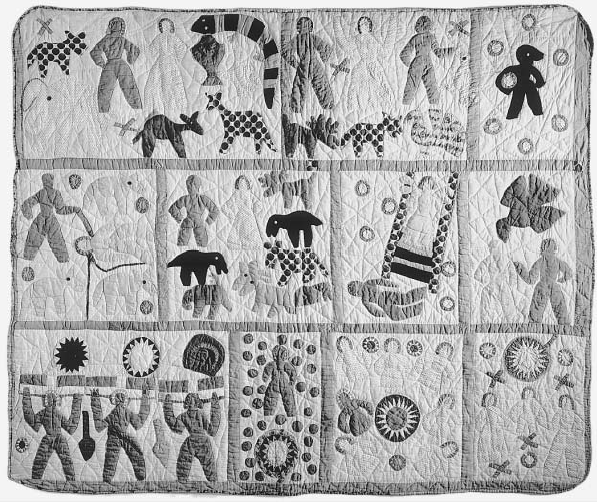LUCINE FINCH: A SECOND EYEWITNESS
The African roots of the quilt were not known to Jenny Smith or to any other white viewer until recent years, when scholars of African art, looking at Powers's work, immediately associated it with figures and signs familiar to them from their research. Certainly those roots were not known to the Alabama writer Lucine Finch when three years after Harriet Powers's death she published her article about the Powers quilt. Lucine Finch was, however, acquainted with African American folkways. Her mother, Julia Neely Finch, was a well-known collector of “mammy songs,” and she herself would write a series of vignettes featuring former slaves she had known. She and Jenny Smith, the sole eyewitnesses to the Harriet Powers story who committed their views to

10. Harriet Powers, Appliqué quilt, ca. 1886
Lucine Finch was younger than Jenny Smith, and her artistic ambitions were equally high. Smith had studied art not only in distinguished schools in America but in Paris. Finch's first love was music, and she was sufficiently good at it that she gave regular concerts, including one in Carnegie Hall in February 1919. A letter to her mother stresses her excitement about not only the performances but the money she would be paid for them: “Well, tomorrow is the eventful day when I make my first $150 fee for an hour's recital!!!” she noted brightly. “The next night I have my one at Carnegie Hall, for which I hope to make $50.”[3] In the same letter she speaks of a manager pressing to represent her—
Lucine Finch seems to have been one of those individuals who had, by any normal standard, outstanding talents in many directions, but none of sufficient quality to bring sustained recognition. As with music, so with her writing. She published poetry, short stories, and the previously mentioned series of vignettes called “Slaves Who Stayed” but only two books, which earned her no notable critical or popular success. She was also deeply interested in drama—one of her books had been a play in verse—and in addition to her concert work, she was paid to stage dramas in the wealthy suburbs of Connecticut. There, though herself far from wealthy, she spent the decade, eventually opening a shop to supplement her income. During the 1920s Finch also took responsibility for her ailing mother, from whom she refused to be parted.